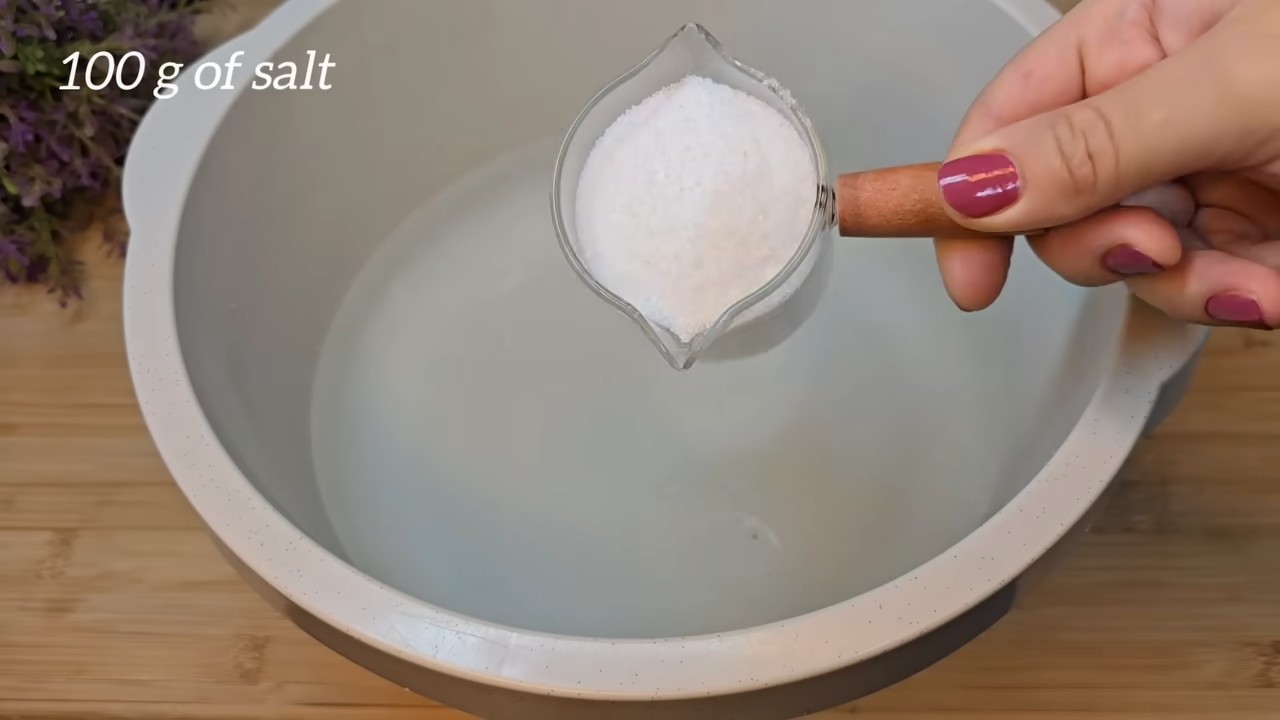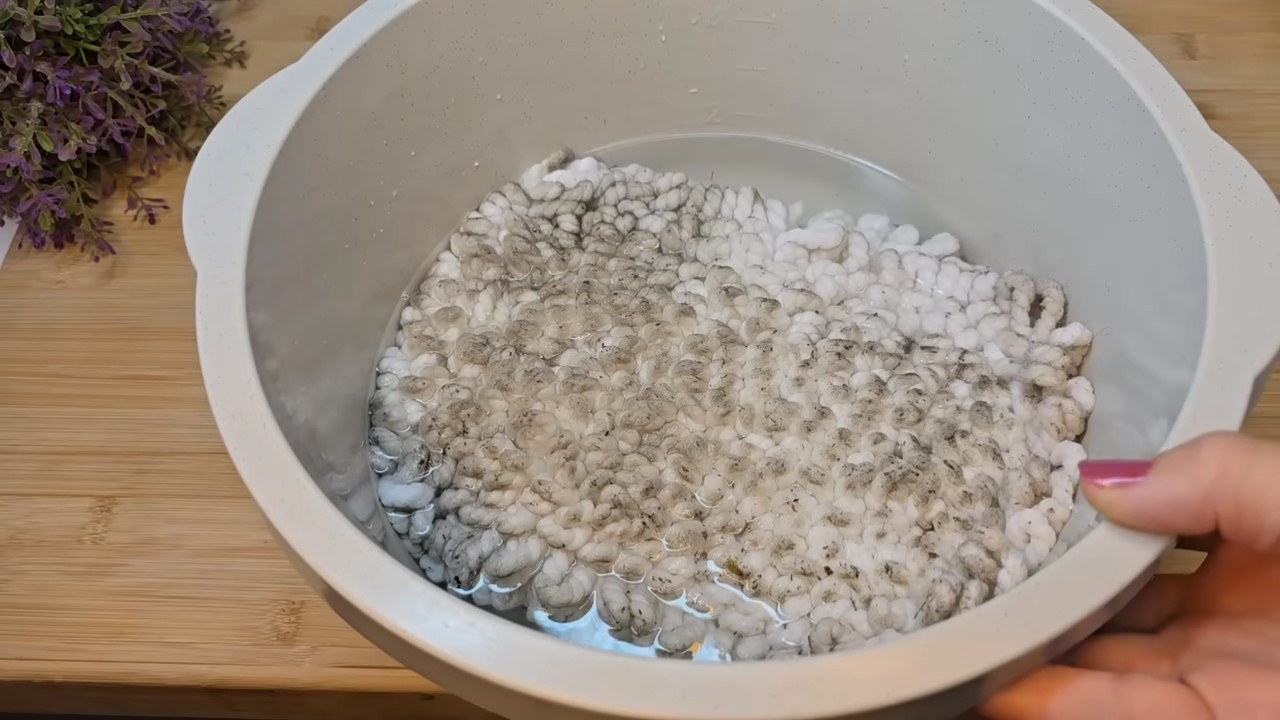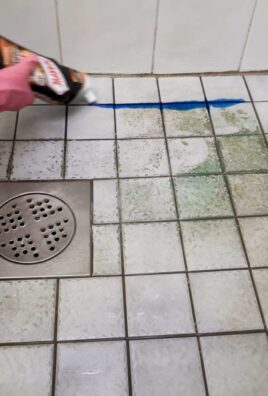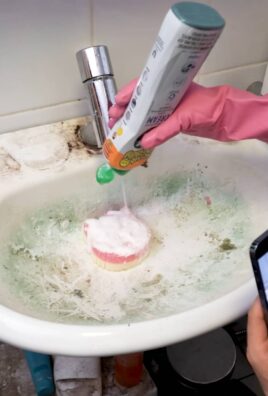Real salt cleaning hacks are about to revolutionize your cleaning routine! Forget harsh chemicals and expensive store-bought solutions. I’m going to show you how this humble kitchen staple can become your secret weapon against grime, stains, and odors all around your home.
Salt has been valued for its preservative and cleansing properties for centuries. Think back to ancient civilizations – Romans used salt to disinfect wounds, Egyptians used it in mummification, and it was even used as currency! Its natural abrasive and absorbent qualities make it a fantastic, eco-friendly alternative to many modern cleaning products.
Let’s face it, cleaning isn’t anyone’s favorite chore. But what if I told you there was a way to make it easier, cheaper, and even a little bit fun? That’s where these real salt cleaning hacks come in. From scrubbing stubborn stains off your cast iron skillet to freshening up your garbage disposal, salt can tackle a surprising number of household tasks. You’ll save money, reduce your reliance on harsh chemicals, and feel good about using a natural, time-tested cleaning solution. So, grab your salt shaker, and let’s get started!

DIY Cleaning Powerhouse: Unleashing the Magic of Salt!
Hey there, fellow DIY enthusiasts! I’m so excited to share some of my favorite cleaning hacks using something you probably already have in your kitchen: good old salt! Forget those expensive, chemical-laden cleaners – salt is a natural, effective, and budget-friendly alternative. Get ready to be amazed by its versatility!
General Tips for Salt Cleaning
Before we dive into the specific hacks, here are a few general tips to keep in mind:
* Choose the Right Salt: While table salt works in a pinch, I prefer using coarser salts like sea salt or kosher salt for scrubbing. They provide a bit more abrasion without being too harsh.
* Test First: Always test any cleaning solution, even a natural one like salt, in an inconspicuous area first to ensure it doesn’t damage the surface.
* Don’t Overdo It: A little salt goes a long way. You don’t need to dump a whole box of salt into your cleaning solution.
* Rinse Thoroughly: After cleaning with salt, always rinse the area well with water to remove any residue.
* Safety First: While salt is generally safe, avoid getting it in your eyes or inhaling large amounts of salt dust.
Cleaning Hacks with Salt
Now, let’s get to the good stuff! Here are some of my favorite ways to use salt for cleaning around the house:
1. Reviving Dull Copper and Brass
Is your copper cookware looking a little lackluster? Don’t worry, salt can bring back its shine!
What you’ll need:
* Salt
* White vinegar (or lemon juice)
* Soft cloth
Step-by-step instructions:
1. Make a Paste: In a small bowl, mix equal parts salt and white vinegar (or lemon juice) to form a paste. The acidity of the vinegar or lemon juice helps to dissolve tarnish, while the salt acts as a gentle abrasive.
2. Apply the Paste: Apply the paste to the copper or brass item, focusing on areas with tarnish.
3. Gently Scrub: Using a soft cloth, gently scrub the surface in a circular motion. You’ll start to see the tarnish lifting away.
4. Rinse Thoroughly: Rinse the item thoroughly with warm water to remove all traces of the paste.
5. Dry and Polish: Dry the item completely with a clean, soft cloth. For an extra shine, you can polish it with a copper or brass polish.
2. De-Gunking Your Iron
An iron with a sticky soleplate can ruin your clothes. Salt to the rescue!
What you’ll need:
* Salt
* Clean cotton cloth or towel
* Iron
Step-by-step instructions:
1. Prepare the Surface: Lay a clean cotton cloth or towel on your ironing board.
2. Sprinkle Salt: Generously sprinkle salt onto the cloth.
3. Heat the Iron: Set your iron to the highest setting (without steam) and let it heat up completely.
4. Iron the Salt: Iron the salt-covered cloth in a circular motion for a few minutes. The salt will help to loosen and remove any gunk or residue from the soleplate.
5. Wipe Clean: Once the iron has cooled down, wipe the soleplate clean with a damp cloth.
6. Repeat if Necessary: If there’s still residue on the soleplate, repeat the process.
3. Cleaning a Scorched Pot or Pan
Burnt food stuck to the bottom of your pot or pan? Don’t throw it away! Salt can help you salvage it.
What you’ll need:
* Salt
* Water
* Sponge or scrub brush
Step-by-step instructions:
1. Cover the Burned Area: Pour a generous amount of salt into the pot or pan, covering the burned area completely.
2. Add Water: Add enough water to cover the salt and the burned food.
3. Let it Soak: Let the mixture soak for several hours, or even overnight. The salt will help to loosen the burned food.
4. Scrub Away: After soaking, use a sponge or scrub brush to scrub away the loosened food. You may need to use a little elbow grease, but the salt should make the process much easier.
5. Rinse and Wash: Rinse the pot or pan thoroughly with soap and water.
4. Freshening Up Your Cutting Boards
Cutting boards can harbor bacteria and odors. Salt can help to disinfect and deodorize them.
What you’ll need:
* Salt
* Lemon (or lime)
* Sponge or scrub brush
Step-by-step instructions:
1. Sprinkle Salt: Sprinkle a generous amount of salt onto the cutting board.
2. Rub with Lemon: Cut a lemon (or lime) in half and use it to rub the salt into the cutting board. The lemon juice will help to disinfect and deodorize the board, while the salt will act as a gentle abrasive.
3. Let it Sit: Let the mixture sit for a few minutes.
4. Scrub and Rinse: Scrub the cutting board with a sponge or scrub brush, then rinse it thoroughly with warm water.
5. Dry Completely: Dry the cutting board completely before storing it.
5. Cleaning Your Sink Drain
A clogged or smelly sink drain is no fun. Salt can help to clear clogs and eliminate odors.
What you’ll need:
* Salt
* Hot water
Step-by-step instructions:
1. Pour in Salt: Pour about 1/2 cup of salt down the drain.
2. Flush with Hot Water: Follow with a pot of boiling hot water.
3. Let it Sit: Let the mixture sit for several hours, or even overnight.
4. Flush Again: Flush the drain again with hot water. The salt will help to break down grease and debris, while the hot water will flush it away.
6. Removing Water Rings from Wood Furniture
Those pesky water rings on your wood furniture are a common problem. Salt can help to remove them.
What you’ll need:
* Salt
* Vegetable oil
* Soft cloth
Step-by-step instructions:
1. Make a Paste: Mix salt and vegetable oil to form a thick paste.
2. Apply the Paste: Gently apply the paste to the water ring.
3. Rub Gently: Rub the paste into the water ring in a circular motion. Be careful not to scratch the wood.
4. Wipe Clean: Wipe away the paste with a clean, soft cloth.
5. Polish: Polish the area with a furniture polish to restore the shine.
7. Cleaning Your Oven
Cleaning the oven is a chore most of us dread. Salt can make it a little easier.
What you’ll need:
* Salt
* Water
* Spray bottle
* Sponge or scrub brush
Step-by-step instructions:
1. Preheat the Oven: Preheat your oven to 200 degrees Fahrenheit.
2. Spray with Water: Spray the inside of the oven with water.
3. Sprinkle with Salt: Generously sprinkle salt onto the wet surfaces, especially on any spills or stains.
4. Let it Cool: Let the oven cool completely.
5. Scrub and Wipe: Once the oven is cool, scrub the surfaces with a sponge or scrub brush. The salt will help to loosen the grime.
6. Wipe Clean: Wipe the oven clean with a damp cloth.
8. Preventing Mold and Mildew in Bathrooms
Salt can help to prevent mold and mildew growth in your bathroom.
What you’ll need:
* Salt
* Water
* Spray bottle
Step-by-step instructions:
1. Make a Solution: Dissolve a generous amount of salt in warm water.
2. Pour into Spray Bottle: Pour the solution into a spray bottle.
3. Spray Problem Areas: Spray the solution onto areas prone to mold and mildew growth, such as shower walls, grout, and around the toilet.
4. Let it Dry: Let the solution dry completely.
5. Repeat Regularly: Repeat this process regularly to help prevent mold and mildew growth.
9. Cleaning Windows and Mirrors
Achieve streak-free shine with a simple salt solution.
What you’ll need:
* Salt
* Water
* Spray bottle
* Microfiber cloth
Step-

Conclusion
So, there you have it! Ditching harsh chemicals and embracing the power of real salt for your cleaning needs isn’t just a trend; it’s a revolution in how we approach household chores. We’ve explored a multitude of ways this humble ingredient can transform your cleaning routine, from scrubbing stubborn grime to deodorizing unpleasant odors. But why is this DIY trick a must-try?
Firstly, it’s incredibly cost-effective. A container of real salt is significantly cheaper than a cabinet full of specialized cleaning products. Think of all the money you’ll save! Secondly, it’s environmentally friendly. By reducing your reliance on chemical-laden cleaners, you’re contributing to a healthier planet for yourself and future generations. Thirdly, it’s surprisingly effective. Real salt’s abrasive texture and natural properties make it a formidable opponent against dirt, grease, and stains.
Beyond the methods we’ve already discussed, consider these variations to further personalize your real salt cleaning experience:
* **Infused Salt Scrub:** Add a few drops of your favorite essential oil (lemon, lavender, or tea tree are excellent choices) to your salt scrub for an aromatic cleaning experience. This is particularly lovely for cleaning sinks and bathtubs.
* **Salt and Vinegar Power Duo:** For extra-tough stains, combine real salt with white vinegar to create a potent cleaning paste. This works wonders on grout and stubborn bathroom buildup.
* **Salt and Baking Soda Blend:** Mix equal parts real salt and baking soda for a gentle yet effective scouring powder. This is ideal for cleaning delicate surfaces like stainless steel without scratching.
* Salt for Laundry: Add a cup of real salt to your washing machine along with your regular detergent. It can help brighten whites, prevent colors from fading, and even act as a natural fabric softener.
The possibilities are truly endless! The beauty of using real salt for cleaning lies in its versatility and adaptability. You can tailor it to suit your specific needs and preferences.
We understand that switching to a DIY cleaning routine can seem daunting at first. You might be skeptical about its effectiveness or unsure about the right proportions. But we urge you to take the plunge and give it a try. Start with a simple task, like cleaning your kitchen sink or scrubbing your bathtub. You’ll be amazed at the results!
More than just a cleaning agent, real salt represents a return to simpler, more sustainable living. It’s a reminder that sometimes, the most effective solutions are the ones that have been around for centuries. It’s a testament to the power of natural ingredients and the ingenuity of DIY solutions.
So, ditch the harsh chemicals, embrace the power of real salt, and transform your cleaning routine today. We’re confident that you’ll be pleasantly surprised by the results.
And now, we want to hear from you! Have you tried using real salt for cleaning? What are your favorite tips and tricks? Share your experiences in the comments below. Let’s build a community of DIY cleaning enthusiasts and inspire others to embrace the power of real salt! We can all learn from each other and discover new and innovative ways to use this amazing ingredient. Your insights could be invaluable to someone who’s just starting out on their DIY cleaning journey. Don’t be shy – share your story and let’s make the world a cleaner, healthier place, one grain of real salt at a time.
Frequently Asked Questions (FAQ)
**Q: Is real salt safe to use on all surfaces?**
A: While real salt is generally safe for most surfaces, it’s always a good idea to test it in an inconspicuous area first, especially on delicate materials like marble or painted surfaces. The abrasive nature of salt could potentially scratch or damage certain finishes. Avoid using it on polished or varnished wood without diluting it significantly and testing first. For sensitive surfaces, consider using a paste of salt and a mild soap or oil.
**Q: What kind of real salt should I use for cleaning?**
A: Common table salt, sea salt, or kosher salt can all be used for cleaning. However, coarse salt is generally preferred for its abrasive texture, which makes it more effective at scrubbing away grime. Avoid using iodized salt on surfaces that may stain, as the iodine can sometimes leave a discoloration. Sea salt is a great option for those looking for a more natural and mineral-rich alternative.
**Q: Can real salt be used to clean drains?**
A: Yes, real salt can be used to help clean and deodorize drains. Pouring a cup of real salt down the drain followed by hot water can help to break down grease and debris. For a more powerful drain cleaner, combine real salt with baking soda and vinegar. Pour the mixture down the drain, let it fizz for 30 minutes, and then flush with hot water. This is a great natural alternative to harsh chemical drain cleaners.
**Q: How do I make a real salt cleaning paste?**
A: Making a real salt cleaning paste is simple. Combine equal parts real salt and water (or vinegar for extra cleaning power) in a bowl. Mix until you have a thick paste. You can then apply the paste to the surface you want to clean, let it sit for a few minutes, and then scrub with a sponge or brush. Rinse thoroughly with water. For added fragrance, add a few drops of your favorite essential oil to the paste.
**Q: Can real salt remove rust?**
A: Yes, real salt can be effective at removing rust. Create a paste of real salt and lemon juice (or vinegar). Apply the paste to the rusted area and let it sit for several hours or overnight. Then, scrub the area with a brush or scouring pad. Rinse thoroughly with water and dry. You may need to repeat the process for stubborn rust stains.
**Q: Is real salt safe for cleaning food preparation surfaces?**
A: Yes, real salt is generally safe for cleaning food preparation surfaces, as long as you rinse the surface thoroughly with water afterward. Its natural properties make it a good alternative to chemical cleaners, which can leave behind harmful residues. However, avoid using real salt on porous surfaces like wood cutting boards, as it can absorb into the wood and potentially contaminate food.
**Q: Can real salt be used to deodorize my refrigerator?**
A: Yes, real salt can help to deodorize your refrigerator. Place a small bowl of real salt in the refrigerator to absorb odors. You can also use a solution of real salt and water to wipe down the interior of your refrigerator. This will help to remove spills and eliminate unpleasant smells. Replace the salt every few weeks or as needed.
**Q: How can I use real salt to clean my oven?**
A: While real salt alone isn’t the most effective oven cleaner, it can be used in conjunction with other ingredients. Sprinkle real salt on spills in your oven while they are still wet. Once the oven has cooled, the salt will have absorbed the spill, making it easier to wipe away. For a more thorough cleaning, create a paste of real salt, baking soda, and water. Apply the paste to the interior of your oven, let it sit for several hours or overnight, and then scrub with a sponge or brush.
**Q: What are the benefits of using real salt for cleaning compared to commercial cleaners?**
A: The benefits are numerous! Real salt is a natural, non-toxic, and environmentally friendly alternative to harsh chemical cleaners. It’s also cost-effective and readily available. Using real salt reduces your exposure to harmful chemicals, minimizes your environmental impact, and saves you money. Plus, it’s a versatile cleaning agent that can be used for a variety of tasks around the house.
**Q: I’m allergic to certain chemicals found in commercial cleaners. Is real salt a good alternative for me?**
A: Absolutely! Real salt is an excellent alternative for individuals with sensitivities or allergies to chemicals commonly found in commercial cleaners. Because it’s a natural substance, it’s less likely to cause allergic reactions or skin irritations. However, if you have very sensitive skin, it’s always a good idea to wear gloves when using real salt for cleaning.




Leave a Comment